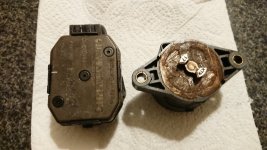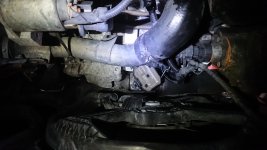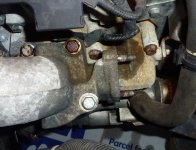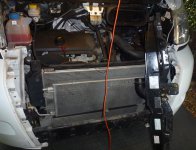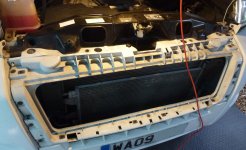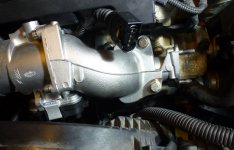- Joined
- Nov 3, 2014
- Messages
- 822
- Points
- 282
Hello All. I have a 2008 2.3 X250 Ducato (120 HP Euro 4). Three times in the last 12 months I have had a P0638 error come up ("very low signal from sensor"). Also a slightly erratic power delivery when accelerating hard above 2500 RPM. Each time it has happened during rainy weather, though this may be a coincidence. Idling is fine, and power is more than enough to do 70 MPH on the level.
This vehicle is normally stored under cover, and the scuttle is well sealed. So the under bonnet electrical connections all look like new when the plugs are removed. The throttle body flap seems to move easily with the fingers, a light coating of black oil was wiped off. An actuator test with MultiECUscan gave the expected flap movement. Throttle body is the original 2008 Wahler, a design which has no feedback, so the ECU can't know directly what it's doing.
The EGR solenoid valve shows the right electrical resistance and the vacuum hoses look OK. It also makes the usual buzzing noise.
On two of the occasions MultiECUscan has logged the P0638 fault at idle speed and when the engine isn't far off cold (35C), so I'm guessing it happens at a junction or roundabout about 5 or 10 minutes after the first startup of the day.
I cleared the last fault and tested it on the driveway off load, with spells of idling interspersed with blipping the throttle. This showed the Throttle valve and EGR valve percentages varying, so the EGR system is activated and trying to do something.
My suspicion in that the throttle valve is occasionally sticking, but before I fork out hundreds of pounds for a new one, does anyone have any ideas what's going on ?
This vehicle is normally stored under cover, and the scuttle is well sealed. So the under bonnet electrical connections all look like new when the plugs are removed. The throttle body flap seems to move easily with the fingers, a light coating of black oil was wiped off. An actuator test with MultiECUscan gave the expected flap movement. Throttle body is the original 2008 Wahler, a design which has no feedback, so the ECU can't know directly what it's doing.
The EGR solenoid valve shows the right electrical resistance and the vacuum hoses look OK. It also makes the usual buzzing noise.
On two of the occasions MultiECUscan has logged the P0638 fault at idle speed and when the engine isn't far off cold (35C), so I'm guessing it happens at a junction or roundabout about 5 or 10 minutes after the first startup of the day.
I cleared the last fault and tested it on the driveway off load, with spells of idling interspersed with blipping the throttle. This showed the Throttle valve and EGR valve percentages varying, so the EGR system is activated and trying to do something.
My suspicion in that the throttle valve is occasionally sticking, but before I fork out hundreds of pounds for a new one, does anyone have any ideas what's going on ?



